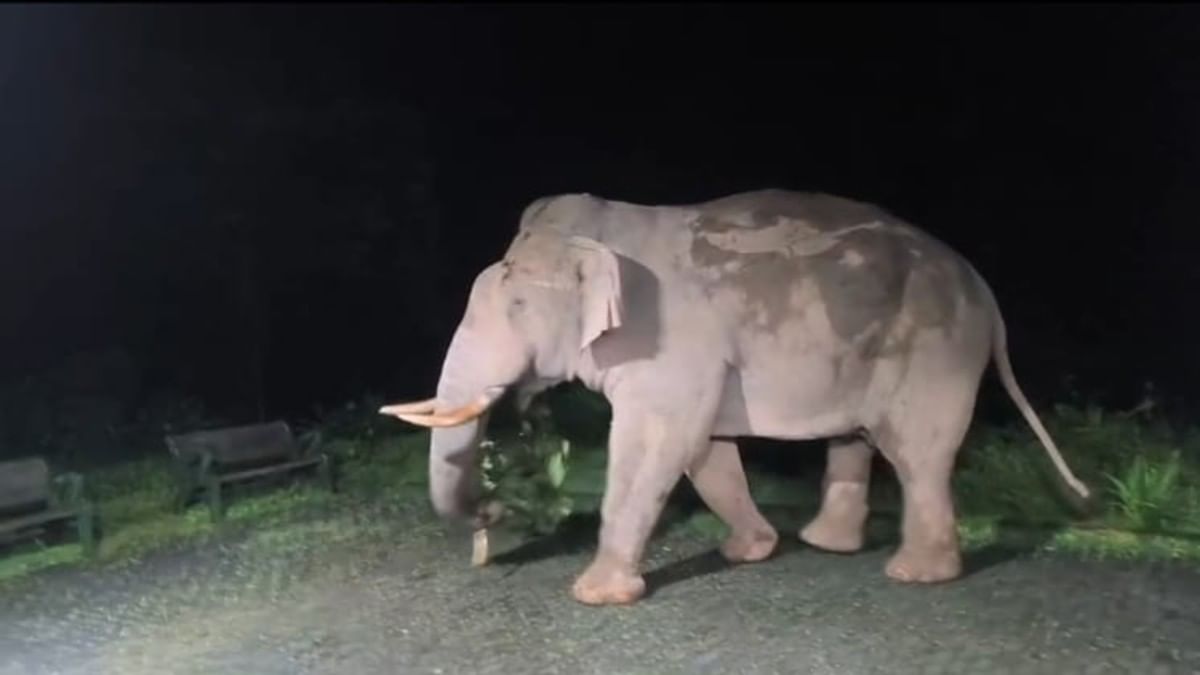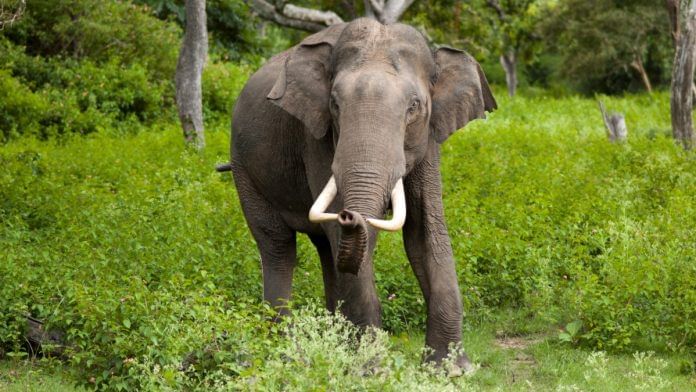Bengaluru: In a bizarre incident, a wild elephant was captured on the evening of 2 November from within the boundaries of Kudremukh National Park and relocated to a rescue center nearby, which has displeased Karnataka conservationists and former forest officers, along with a few villagers. The elephant, aged about 40, had roamed these forests for almost 15 years in Agumbe (once referred to as the ‘Cherrapunji of the South’ owing to high average rainfall), Kudremukh and other neighbouring forests.
It had not attacked anyone until 31 October when it killed two farmers, Umesh and Harish.
Wildlife experts are questioning the rationale of the capture itself.
The mention of section 11(1)(a) of the Wildlife (Protection) Act 1972, in the government order dated 31 October, to capture the wild elephant is not right, experts say. The law has to be read in its totality, and interpretation and implementation of the law cannot be on the basis of just one section.

There is another anomaly. Kudremukh National Park currently has around 275 families living inside. Had the elephant killed anyone outside the boundaries of the Protected Area (PA), the capture and relocation would be justified, say wildlife conservationists. But capturing the wild elephant is an entirely misguided step, and it would have tremendous consequences for conservation, said a conservationist who wished to be anonymous because he is researching the procedures followed in this capture.
The local pressure that built up after the death of the villagers was huge.
Assistant Conservator of Forests (ACF) Sathish of Kudremukh Wildlife sub-division says the killing of two farmers propelled the forest department and other officials to decide to capture. “We wanted to prevent any such incidents in the future.”
Kudremukh National Park is the last remaining patch of Shola grasslands in India and a UNESCO World Heritage Site. It is a catchment and birthplace of major rivers.
“The decision of the state to relocate elephants out of Kudremukh National Park is bizarre. There are enclosures inside the park that should be relocated out on priority,” says B.K. Singh, retired Principal Chief Conservator of Forests (Head of Forest Force), Karnataka. “Why do politicians not put their might to relocate human families? How many years have these families been aspiring to move out?”
The families inside Kudremukh National Park have been demanding relocation for better access to healthcare and education.
Renowned conservationist D.V. Girish of Chikkamagaluru says the real problem lies in the state’s unwillingness to implement long-pending voluntary relocation programmes that would secure both human safety and wildlife freedom. “The Karnataka government has been promising to relocate families inside the park with a good rehabilitation package from the past 25 years, but only a few families have been relocated and then the whole thing has fallen silent,” he tells ThePrint.
Only 3 percent of the land in the country is left for wildlife use in the form of Protected Area, he points out, adding that PAs are reserved exactly with the precise intention of preventing the rampant intrusion of wild animals into human settlements. “It is only appropriate to capture these animals when they unnecessarily come out of these areas and pose a threat to human life. One must question how right this operation of capturing a wild elephant from within a PA.”
Wildlife experts say that this has become a regular practice in the state.
In a similar incident, on the evening of 9 June and during the early hours of the next day, a tiger had attacked and killed one, and injured a tribal member from the Soliga community in the heart of the BRT Tiger Reserve. The result was that the tiger was captured and shifted to a rescue centre. It happened inside a Protected Area.
Tejus RS is an alum of ThePrint School of Journalism, contributing to ThePrint
(Edited by Amrtansh Arora)
Also Read: Should Karnataka elephants be kept in confinement camps? Everyone has a different view






